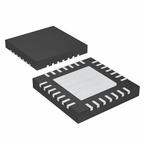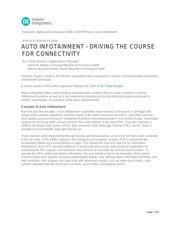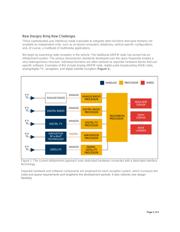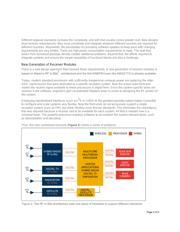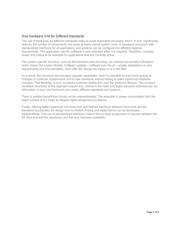下载

Keywords:
digital audio broadcast (DAB), DAB/FM tuner, auto infotainment
APPLICATION NOTE 5810
AUTO INFOTAINMENT - DRIVING THE COURSE
FOR CONNECTIVITY
By:
Frank Berkner, Applications Manager
Henri W. Weller, Principal Member of Technical Staff
Werner Bauerschmidt, Senior Member of Technical Staff
Abstract: System solutions from Maxim Integrated make it possible to cultivate a forward-looking automotive
infotainment landscape.
A similar version of this article appeared February 20, 2014 in EE Times Europe.
Maxim Integrated offers market-leading semiconductor solutions that are used in modern in-vehicle
infotainment systems as well as in the networking infrastructure for the electrical systems employed in
modern automobiles. An overview of the latest developments.
Evolution of Auto Infotainment
Over the past few decades, in-car infotainment capabilities have evolved continuously. It all began with
simple audio systems adapted to meet the needs of the motor-vehicle environment. Later other services
were added, such as Germany's "Autofahrer-Rundfunk-Informationssystem" (Car Driver's Radio Information
System) for receiving traffic announcements from radio stations in the mid-1970s. That was followed in
1998 by the Radio Data System (RDS), later renamed Traffic Message Channel (TMC), which made it
possible to transmit traffic data right into the car.
These services were implemented through analog radio broadcasting, so all of the functions were contained
in the car radio. In the 1990s, however, the emergence of navigation systems (GPS) augmented the
functionality offered by a conventional car radio. This marked the start of a new era for automotive
infotainment. Now GPS required additional IT-based data processing, more technical capabilities for
evaluating the GPS signals, and input from other sensors to calculate the vehicle's exact position. To
operate the GPS system and deliver information, the user interface had to be expanded. More system
enhancements were needed, including sophisticated display units offering higher information densities, and
high-resolution color displays and input units with advanced controls, such as rotary-push knobs. Later
systems operated with the aid of touch screens, voice control, and gesture control.
Page 1 of 9

